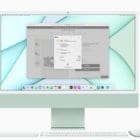It seems that with video and pictures becoming the primary form of content, our iPhones need more and more space to operate. A 128 GB iOS device used to feel like plenty to last years, and for the most part, that’s still true. However, you notice that your device starts to slow down a little, and things don’t work as they used to. Not many casual users know how to use iOS 16 to stop system data filling their iPhone, and many may not know that their device is even running out of storage. If you want to find out how to optimize your smartphone usage and declutter your device, read on to find out how iOS 16 can stop system data from filling your iPhone.
Related Reading:
- iOS 16: Best Ways to Stay Organized
- The Best iPhone 14 Tips and Tricks
- iPhone 14’s Best Feature Is Actually Hidden
- iOS 16 Setup: What to Do First
Contents
What is System Data?

System data is everything that’s stored on your iPhone, like apps, music, photos, and settings. If you take a peek at your System Data page, you can find a chart showing exactly how much data you’re using and what type of content is filling up your iPhone the most. To check this, go to Settings > General > iPhone Storage, and then you can see all the apps, types of content, and how much space your phone has left. Every time you download an app, you are filling up your system data. Every time you don’t clear your Safari web browsing cache, you’re storing cookies and other web data onto your system. It’s crucial that you perform a little bit of maintenance on your device every once in a while. It’s a little bit easier with iOS 16 to stop system data filling your iPhone, with added transparency on your data and which apps and services are using it.
iOS 16: How to Stop System Data Filling Your iPhone
Here are some helpful tips for iOS 16 to stop system data filling your iPhone:
Safari Cache
When you use Safari, it remembers what websites you’ve visited and what content you’ve interacted with and subsequently stores trackers and cookies from each website. This can lead to thousands of cookies lying around in your Safari cache, and sometimes people never clean it. Web browsing isn’t the most performance-intensive activity you could do on your phone, but it certainly adds up over time. If you use Safari, you can clear your cache by heading to Settings > Safari > Clear History and Website Data. If you’re using Google Chrome, you can tap on the ellipsis icon at the bottom of the screen, then go to History > Clear Browsing Data. For other browsers, you would have to clear your cache on the app itself as you do with Google Chrome.
Delete Old Messages
One of the new iOS 16 tips to stop system data filling your iPhone is automatically deleting iMessage after a certain period of time. Not a lot of people perform a regular clean-up of their text messages, and they leave their iMessage app with hundreds or thousands of texts over multiple years. If you want to delete your messages manually, you can go to your iMessage app, tap on Select, and then drag down all of the messages you wish to delete. Alternatively, navigate to Settings > Messages > Keep Messages > choose how long you want to keep messages before iOS auto-deletes them.
Offload or Delete Apps
If you want to see how much space your apps are taking on your iPhone, head over to the System Data screen (Settings > General > iPhone Storage). From there, you can see each and every app you have on your phone, ranked in order of which is taking up the most space to the least. You can tap on each app and see the app size, how much space the documents and data take up, and choices to offload or delete the app. Offloading deletes the app but keeps permissions, settings, and data so that you can just redownload the app when you need it again. Deleting it removes all data completely. We wouldn’t recommend offloading apps as it’s a bit pointless. Instead, delete any apps you don’t need. You’ll probably find a lot of useless apps on your iPhone!
Use iCloud
If you’re someone who loves to take pictures and videos, you’ll probably benefit from an iCloud subscription. If you purchase an iCloud subscription, you can instantly upload photos and videos straight to the cloud instead of storing them on your device. This can save significant amounts of storage data for other purposes. To buy an iCloud subscription, head to Settings > Apple ID > iCloud, then scroll to the bottom and tap on Upgrade to iCloud+. You get up to 2 TB of storage, along with a few other features.
Delete Downloaded Content
These days, more apps are looking to improve integration with iOS devices and create a more seamless experience. For example, Netflix allows you to download shows and movies so that you can watch them even when you have no cellular data or WiFi. What many people don’t know is that this content doesn’t get deleted from your device automatically. So, for each application you’ve downloaded content on (YouTube, Netflix, Safari, etc.), you’ll have to go through and delete any files. You may find that you can delete a boatload of system data this way.










Write a Comment